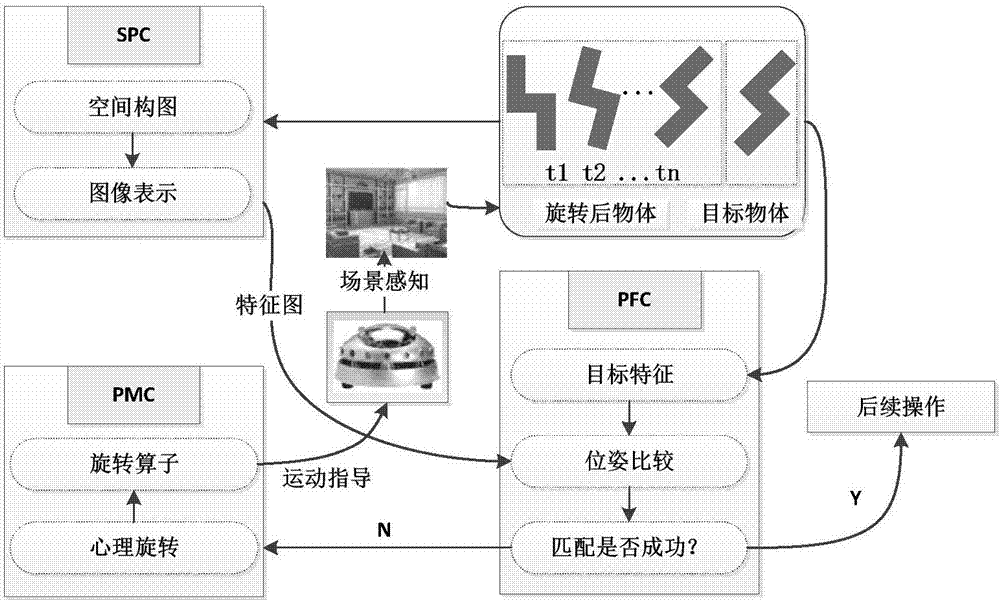Four-dimensional space translation and rotation-based mental rotation mechanism realization model
A four-dimensional space and psychological technology, applied to computer components, character and pattern recognition, instruments, etc., can solve problems such as poor learning ability and weak adaptive ability, so as to avoid costs, overcome poor learning ability, and strengthen environmental transplantation ability Effect
- Summary
- Abstract
- Description
- Claims
- Application Information
AI Technical Summary
Problems solved by technology
Method used
Image
Examples
Embodiment Construction
[0022] The method of the present invention will be further described in detail below in conjunction with the accompanying drawings; it should be understood that the preferred embodiments are only for illustrating the present invention, rather than limiting the protection scope of the present invention.
[0023] figure 1 Functional flowchart of complete brain regions for primate mental rotation; figure 2 The mental rotation functional block diagram proposed for the present invention is as shown in the figure: the psychological rotation mechanism model based on four-dimensional space translation and rotation provided by the present invention includes the following steps:
[0024] S1: Abstract representation of the spatial composition function of the upper parietal cortex, input the RGB image and 3D point cloud image of the current object, output 3 color feature maps, 8 shape feature maps, 4 direction feature maps and 1 point cloud key point feature picture;
[0025] S2: abstr...
PUM
 Login to View More
Login to View More Abstract
Description
Claims
Application Information
 Login to View More
Login to View More - R&D
- Intellectual Property
- Life Sciences
- Materials
- Tech Scout
- Unparalleled Data Quality
- Higher Quality Content
- 60% Fewer Hallucinations
Browse by: Latest US Patents, China's latest patents, Technical Efficacy Thesaurus, Application Domain, Technology Topic, Popular Technical Reports.
© 2025 PatSnap. All rights reserved.Legal|Privacy policy|Modern Slavery Act Transparency Statement|Sitemap|About US| Contact US: help@patsnap.com


